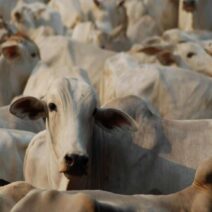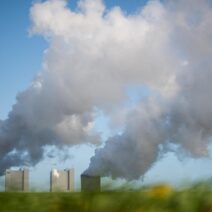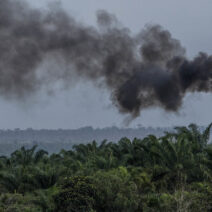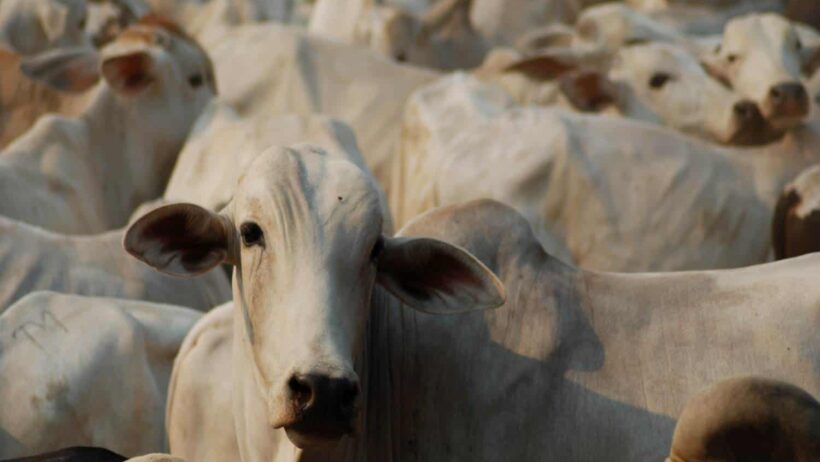The climate crisis is often touted as a consequence of industrialization, energy production, and personal vehicular choices. Yet, the factors contributing to this global dilemma extend far beyond the emissions from our cars. One significant contributor that often goes underappreciated is the livestock industry, particularly cattle ranching. This exploration aims to unravel the intricate ties between our consumption patterns—both in terms of transportation and dietary choices—and their implications for state-fueled climate change.
To begin with, we must acknowledge the undeniable rise of the automobile culture. Cars are often seen as symbols of freedom, progress, and status. Their convenience is such that we frequently overlook the environmental repercussions of their use. In 2021, the transportation sector was responsible for nearly 29% of greenhouse gas emissions in the United States alone. As we accelerate toward an electric future, the fundamental issue of resource consumption remains prevalent. The production of electric vehicles also devours extensive natural resources, contributing to extraction practices that further exacerbate our ecological footprint.
While discussions around reducing reliance on vehicles are imperative, the gastronomic choices of a society undergoes insufficient scrutiny. The production of cattle for meat and dairy is a colossal contributor to greenhouse gas emissions, rivaling that of the transportation sector. Enter methane, a potent greenhouse gas that is emitted during the digestion process of ruminants like cows. In fact, according to the Intergovernmental Panel on Climate Change, methane poses a greater short-term threat to our atmosphere compared to carbon dioxide. Cattle farming relies on intricate systems of feed production, land use, and waste, generating an ecosystem of environmental degradation.
The juxtaposition between automotive emissions and cattle-related emissions offers a salient point of contemplation. Just as cars fill the roads, cattle fill countless acres of pastureland, their feed growing in deforested areas, negating the very balance we depend upon for carbon absorption. When we cut down forests for grazing pastures, we are thrusting ourselves into an unsustainable cycle of carbon release, as trees that once sequestered atmospheric carbon meet their untimely demise.
The fascination with automobiles encapsulates a deeper societal conundrum: a relentless pursuit of convenience and status. Cattle ranching, while arguably an ancient practice rooted in tradition, sadly perpetuates the same ideals of excess and complacency. The inherent challenge lies in unraveling deeply ingrained habits—both in our daily commutes and our meal applications. It raises the question: can we pivot from a culture of excess to one of sustainability?
There exists a palpable irony in the parallel narratives of cars and cattle, both seemingly harmless in isolation yet collectively disastrous. The shiny façade of effective transportation hides our complicity in climate degradation, as many overlook that every meal’s impact extends to the global stage. Sustainable practices, such as regenerative agriculture, promise a semblance of balance when it comes to livestock farming, yet the widespread adoption remains elusive. Cattle ranching, if managed better, can potentially play a role in carbon sequestration and biodiversity preservation.
The disconnect between our personal transportation and food choices can also be observed through consumer behavior. Car purchases often come with extensive background research, whereas dietary decisions can sometimes be made with little foresight regarding origin and sustainability. The ease of access to cheap meat doesn’t reveal the profound ecological cost hidden behind those prices. Just as individuals grapple with an identity shaped by vehicle ownership, they must also confront the moral implications of their dietary selections. This interplay further complicates our understanding of environmental responsibility.
Furthermore, consider the water footprint tied to both transportation and livestock. An average vehicle consumes a small fraction of the total water resources compared to what is utilized in animal agriculture. While electric vehicles need water for production and battery cooling, the staggering number of gallons consumed to produce beef—from watering crops to hydrating the animals—stands as a stark reminder of the intricate web of resource dependency. This multifaceted water crisis parallels our thoughts on emissions and underscores a need to address the complete picture of resource use.
Transitioning our mindset from automobile-centric living to a more holistic view of sustainable resource management is not merely an environmental necessity; it is also a moral imperative. The amalgamation of our choices—whether behind the wheel or at the dinner table—demands critical introspection. Civilization stands at a crossroads, confronted with a confluence of crises fueled by our own hands. Awareness must evolve into action, where both the industrial sector and individual consumers are compelled to rethink and recalibrate their choices.
This transcendence awaits, yet it hinges upon acceptance of collective accountability. Envision a regulatory landscape where meat production is subjected to environmental sustainability metrics similar to those imposed on the automotive industry. By promoting plant-based diets, decreasing consumption of beef, exploring alternative protein sources, and advocating for sustainable ranching practices, society can endeavor to mitigate this dilemma. The juxtaposition between our fascination for cars and our ignorance towards cattle cannot endure unchallenged.
In summary, the journey from cars to cattle exemplifies an intricate tableau of human consumption habits, revealing an interconnectedness that demands recognition. To engage in climate action, we must confront the intricacies of our everyday choices, whether on the road or at the table. As we delve deeper into the factors propelling climate degradation, an understanding of how our daily lives contribute to the climate crisis may illuminate paths toward a more sustainable existence. The task is monumental, yet not insurmountable. Together, we can foreground sustainable practices over unnecessary consumption, turning the tide in a race against climate catastrophe.






